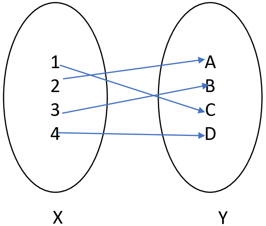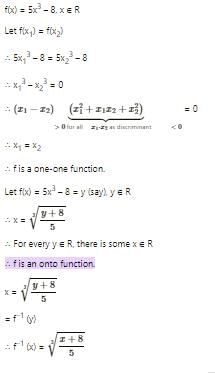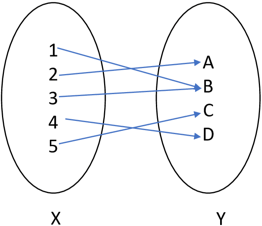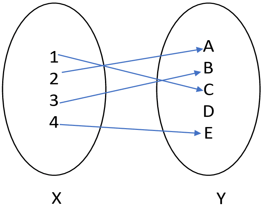Test: Types of Functions - SAT MCQ
Test Description
10 Questions MCQ Test - Test: Types of Functions
Test: Types of Functions for SAT 2025 is part of SAT preparation. The Test: Types of Functions questions and answers have been prepared
according to the SAT exam syllabus.The Test: Types of Functions MCQs are made for SAT 2025 Exam.
Find important definitions, questions, notes, meanings, examples, exercises, MCQs and online tests for Test: Types of Functions below.
Solutions of Test: Types of Functions questions in English are available as part of our course for SAT & Test: Types of Functions solutions in
Hindi for SAT course.
Download more important topics, notes, lectures and mock test series for SAT Exam by signing up for free. Attempt Test: Types of Functions | 10 questions in 15 minutes | Mock test for SAT preparation | Free important questions MCQ to study for SAT Exam | Download free PDF with solutions
Test: Types of Functions - Question 1
Let M = {5, 6, 7, 8} and N = {3, 4, 9, 10}. Which one of the following functions is neither one-one nor onto?
Detailed Solution for Test: Types of Functions - Question 1
Test: Types of Functions - Question 2
Let A = {1, 2, 3} and B = {4, 5, 6}. Which one of the following functions is bijective?
Detailed Solution for Test: Types of Functions - Question 2
Detailed Solution for Test: Types of Functions - Question 3
Test: Types of Functions - Question 4
A function f: R → R is defined by f(x) = 5x3 - 8. The type of function is _________
Detailed Solution for Test: Types of Functions - Question 4
Detailed Solution for Test: Types of Functions - Question 5
Test: Types of Functions - Question 6
Let P = {10, 20, 30} and Q = {5, 10, 15, 20}. Which one of the following functions is one – one and not onto?
Detailed Solution for Test: Types of Functions - Question 6
Test: Types of Functions - Question 7
A function f: R → R defined by f(x) = 5x4 + 2 is one – one but not onto.
Detailed Solution for Test: Types of Functions - Question 7
Test: Types of Functions - Question 8
The function f: R → R defined as f(x) = 7x + 4 is both one-one and onto.
Detailed Solution for Test: Types of Functions - Question 8
Test: Types of Functions - Question 9
A function f∶ N → N is defined by f(x) = x2 + 12. What is the type of function here?
Detailed Solution for Test: Types of Functions - Question 9
Detailed Solution for Test: Types of Functions - Question 10
Information about Test: Types of Functions Page
In this test you can find the Exam questions for Test: Types of Functions solved & explained in the simplest way possible.
Besides giving Questions and answers for Test: Types of Functions, EduRev gives you an ample number of Online tests for practice
Download as PDF







 Therefore, the function is onto.
Therefore, the function is onto.











